Investigation of Microwave Electromagnetic Fields in Open and Shielded Areas and Their Possible Effects on Biological Structure
Abstract
1. Introduction
Propagation of EM Waves and Its Interaction with Matter
2. Experimental Set-Up and Results
2.1. Case 1, Measurement Inside the Elevator Cabin
2.2. Case 2, Measurement in the Vehicle
3. Conclusions
Author Contributions
Funding
Institutional Review Board Statement
Informed Consent Statement
Data Availability Statement
Conflicts of Interest
References
- Camilleri, J.S.; Farrugia, L.; Curto, S.; Rodrigues, D.B.; Farina, L.; Dingli, G.C.; Bonello, J.; Farhat, I.; Sammut, C.V. Review of Thermal and Physiological Properties of Human Breast Tissue. Sensors 2022, 22, 3894. [Google Scholar] [CrossRef] [PubMed]
- Lin, J.C. Are Cell Phones or Radio-Frequency Electromagnetic Fields Possibly Carcinogenic to Humans? [Telecommunications Health and Safety]. IEEE Antennas Propag. Mag. 2012, 54, 210–212. [Google Scholar] [CrossRef]
- IEEE Std C95.1-2019; IEEE Standard for Safety Levels with Respect to Human Exposure to Electric, Magnetic, and Electromagnetic Fields, 0 Hz to 300 GHz. The Institute of Electrical and Electronics Engineers: New York, NY, USA, 2019. [CrossRef]
- Available online: https://www.who.int/news-room/questions-and-answers/item/radiation-electromagnetic-fields (accessed on 1 September 2022).
- Pinola, M. Understanding Wi-Fi and How it Works. 2018. Available online: https://www.lifewire.com/what-is-wi-fi-2377430 (accessed on 1 October 2022).
- Frei, P.; Poulsen, A.H.; Johansen, C.; Olsen, J.H.; Steding-Jessen, M.; Schuz, J. Use of mobile phones and risk of brain tumours: Update of Danish cohort study. BMJ 2011, 343, d6387. [Google Scholar] [CrossRef] [PubMed]
- The INTERPHONE Study Group. Brain tumour risk in relation to mobile telephone use: Results of the INTERPHONE international case-control study. Int. J. Epidemiol. 2010, 39, 675–694. [Google Scholar] [CrossRef] [PubMed]
- Salieva, T.; Begimbetova, D.; Razak, M.; Matkarimov, M.B. Biological effects of non-ionizing electromagnetic fields: Two sides of a coin. Prog. Biophys. Mol. Biol. 2019, 141, 25–36. [Google Scholar] [CrossRef] [PubMed]
- International Commission on Non-Ionizing Radiation Protection (ICNIRP). Guidelines for limiting Exposure to Electromagnetic Fields (100 kHz to 300 GHz). 2020. Available online: https://www.gsma.com/publicpolicy/wp-content/uploads/2021/10/GSMA_International_EMF_Exposure_Guideline_Oct21.pdf (accessed on 1 July 2022).
- Abdul-Al, M.; Amar, A.S.I.; Elfergani, I.; Littlehales, R.; Ojaroudi Parchin, N.; Al-Yasir, Y.; See, C.H.; Zhou, D.; Zainal Abidin, Z.; Alibakhshikenari, M.; et al. Wireless Electromagnetic Radiation Assessment Based on the Specific Absorption Rate (SAR): A Review Case Study. Electronics 2022, 11, 511. [Google Scholar] [CrossRef]
- European Telecommunications Standards Institute (ETSI) TS 136 101 V15.9.0 (2020-02). LTE. Evolved Universal Terrestrial Radio Access (E-UTRA); User Equipment (UE) Radio Transmission and Reception (3GPP TS 36.101 Version 15.9.0 Release 15); ETSI: Sophia-Antipolis, France, 2020. [Google Scholar]
- Panagopoulos, D.J.; Johansson, O.; Carlo, G.L. Evaluation of Specific Absorption Rate as a Dosimetric Quantity for Electromagnetic Fields Bioeffects. PLoS ONE 2013, 8, e62663. [Google Scholar] [CrossRef]
- Mydlova, J.; Benova, M.; Stefancova, V.; Pitlova, E. Assessment of SAR in human body model with the cochlear implant inside a railway vehicle. In Proceedings of the 13th International Scientific Conference on Sustainable, Modern and Safe Transport, Transportation Research Procedia, TRANSCOM 2019, Stary Smokovec, Slovakia, 29–31 May 2019; pp. 1497–1503, ISSN 23521457. [Google Scholar]
- Zradziński, P.; Karpowicz, J.; Gryz, K.; Morzyński, L.; Młyński, R.; Swidziński, A.; Godziszewski, K.; Ramos, V. Modelling the Influence of Electromagnetic Field on the User of a Wearable IoT Device Used in a WSN for Monitoring and Reducing Hazards in the Work Environment. Sensors 2020, 20, 7131. [Google Scholar] [CrossRef] [PubMed]
- Iakovidis, S.; Apostolidis, A.; Manassas, A.; Samaras, T. Electromagnetic Fields Exposure Assessment in Europe Utilizing Publicly Available Data. Sensors 2022, 22, 8481. [Google Scholar] [CrossRef] [PubMed]
- Suhag, A.K.; Larik, R.S.; Mangi, G.Z.; Khan, M.; Abbasi, S.K.; Madiha, H. Impact of Excessive Mobile Phone Usage on Human. Comput. Sci. Syst. Biol. 2016, 9, 173–177. [Google Scholar] [CrossRef]
- Hwu, S.U.; Rhodes, B.A.; De Silva, B.K.; Sham, C.C.; Keiser, J.R. RF exposure analysis for multiple Wi-Fi devices in enclosed environment. In Proceedings of the IEEE Sensors Applications Symposium Proceedings, Galveston, TX, USA, 19–21 February 2013; Available online: https://ntrs.nasa.gov/citations/20130001900 (accessed on 29 January 2023).
- Psenakova, Z.; Benova, M.; Mydlova, J. Passenger Exposure of Electromagnetic Field in the train. In Proceedings of the IEEE 21st International Conference on Computational Problems of Electrical Engineering (CPEE), Warsaw, Poland, 16–19 September 2020. [Google Scholar]
- Psenakova, Z. The Influence of the Electromagnetic Field on the Human Organism with a Focus on the Human Head. Dissertation Thesis, University of Zilina, Žilina, Slovakia, 2007. [Google Scholar]
- International Electrotechnical Commission (IEC)/Institute of Electrical and Electronics Engineers (IEEE) 62704-1:2017. Determining the Peak Spatial-Average Specific Ab-Sorption Rate (SAR) in the Human Body from Wireless Communications Devices, 30 MHz to 6 GHz—Part 1: General Requirements for Using the Finite-Difference Time-Domain (FDTD) Method for SAR Calculations; IEC: Geneva, Switzerland, 2017. [Google Scholar]
- Smondrk, M.; Benova, M.; Psenakova, Z. Evaluation of Metallic Implant Influence on SAR Distribution in a Multilayered Tissue Model. In Proceedings of the 2017 18th International Conference on Computational Problems of Electrical Engineering (CPEE), Kutna Hora, Czech Republic, 11–13 September 2017; pp. 1–4. [Google Scholar] [CrossRef]
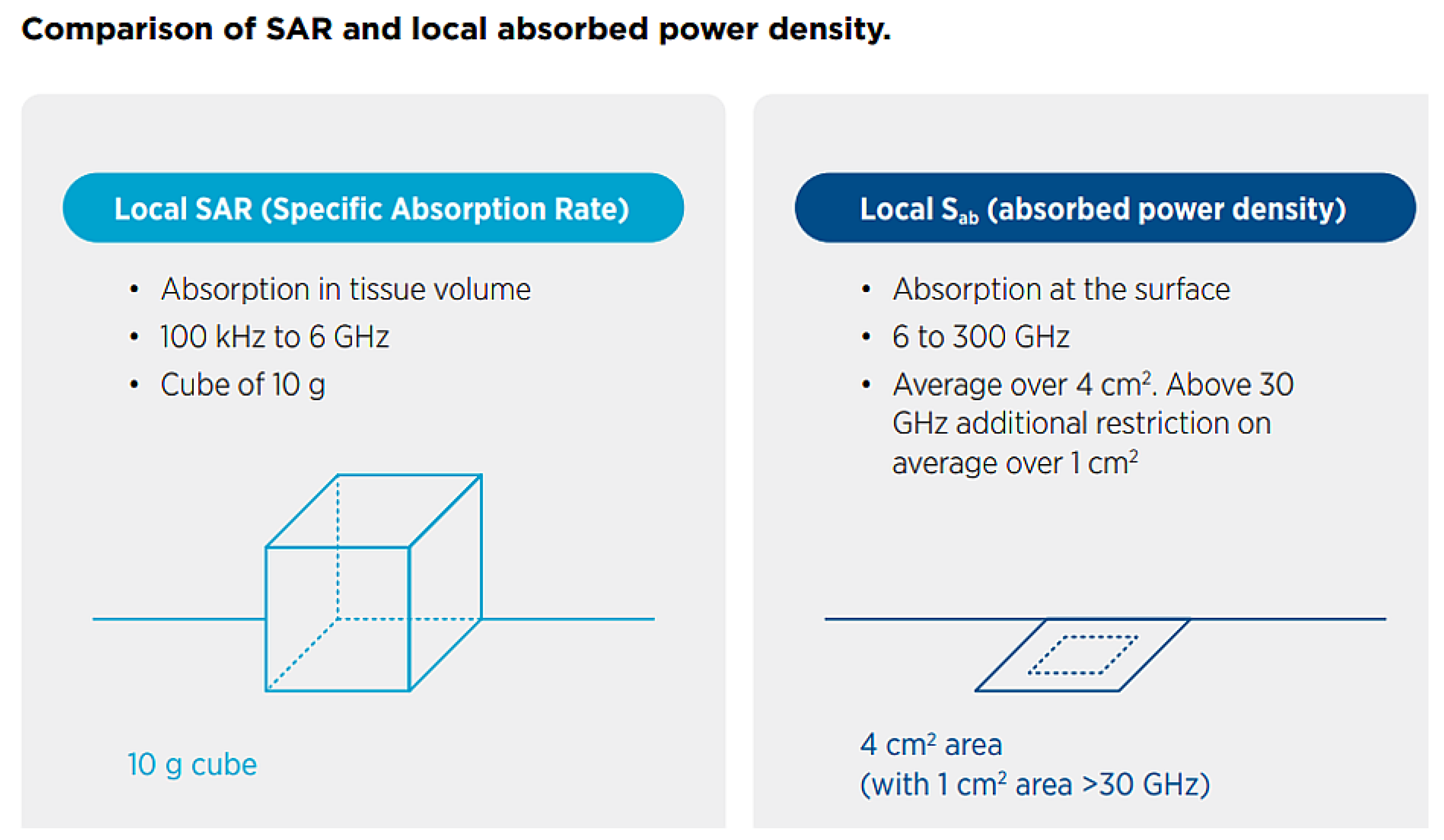

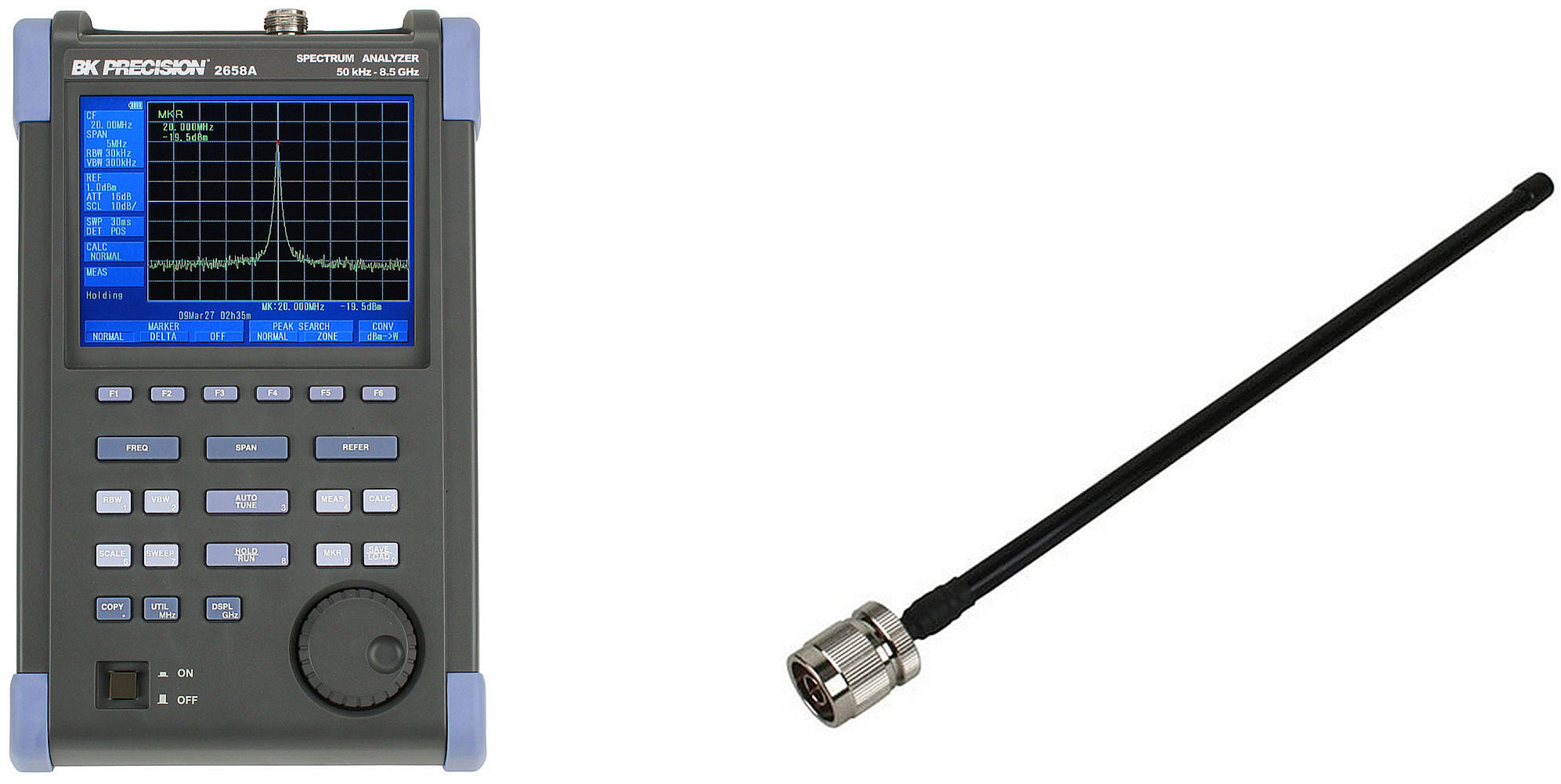


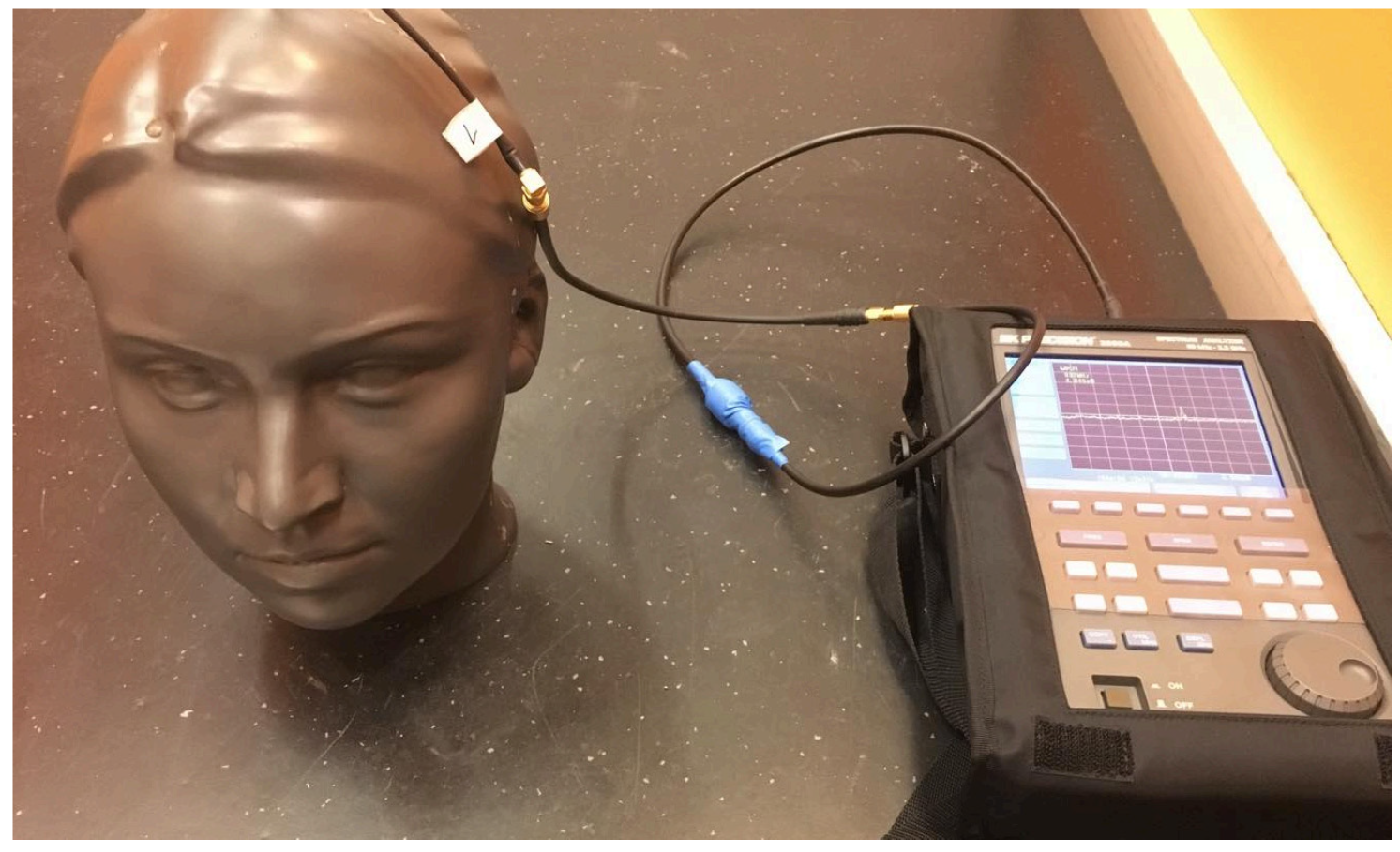


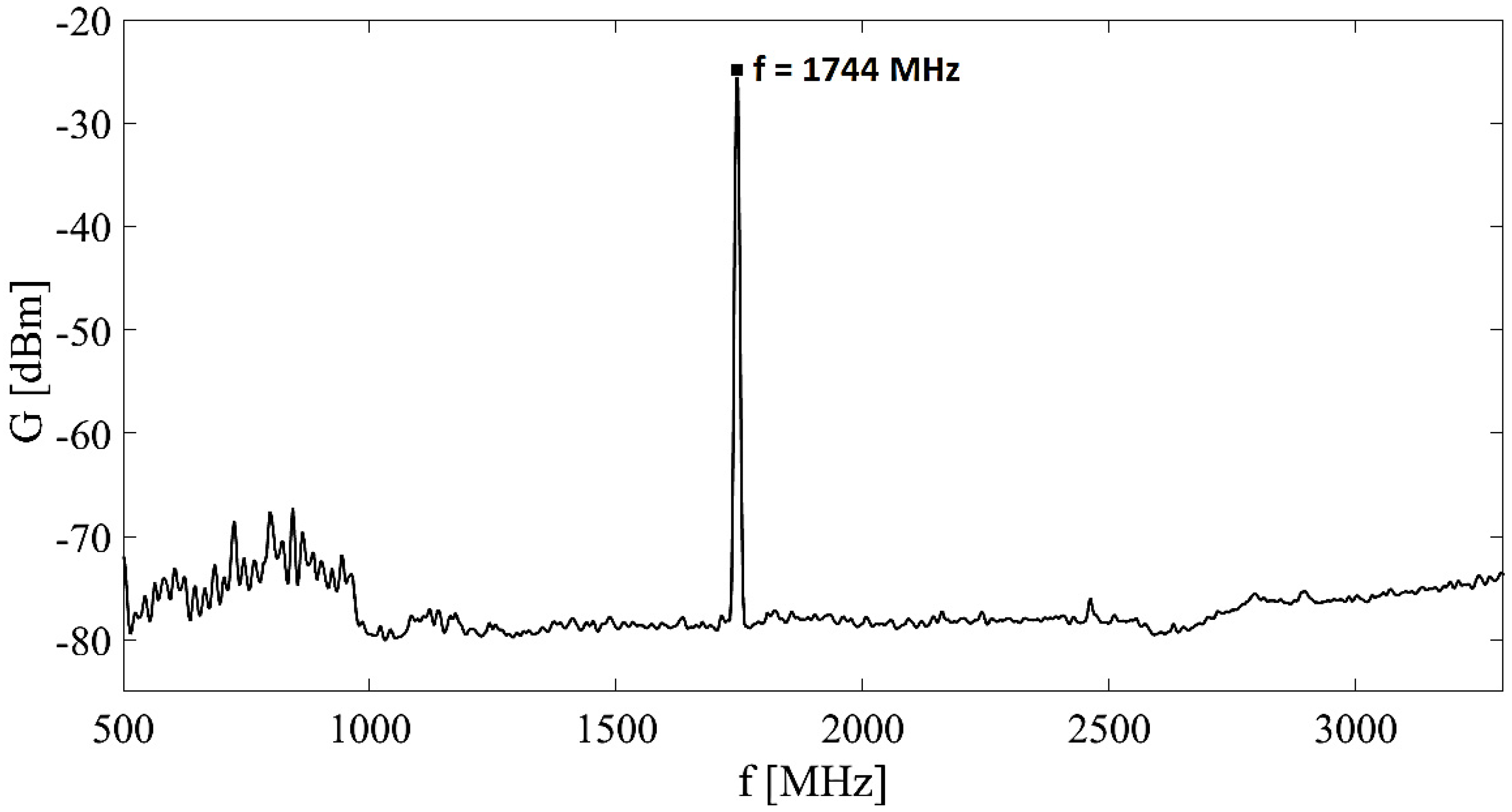
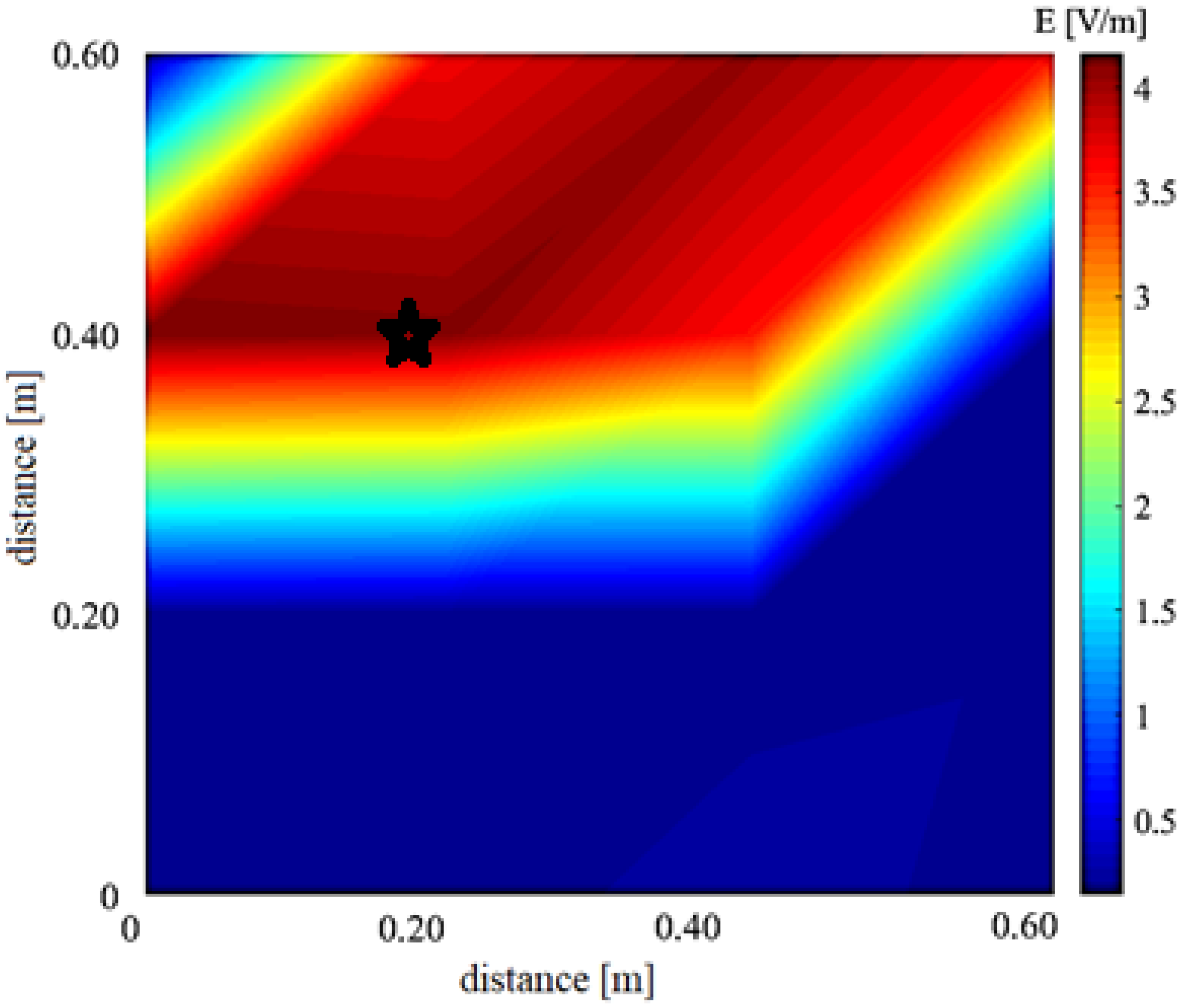
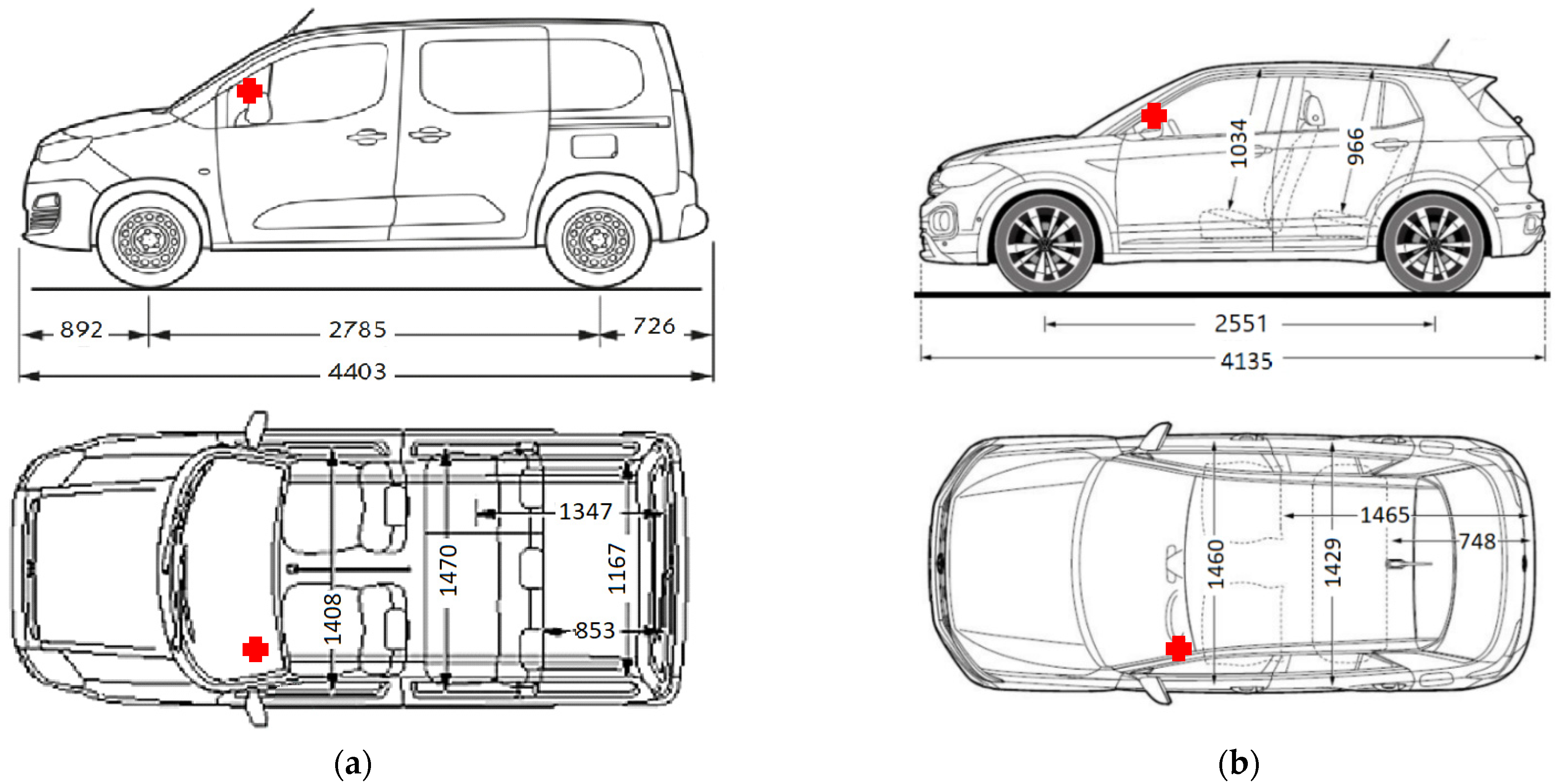

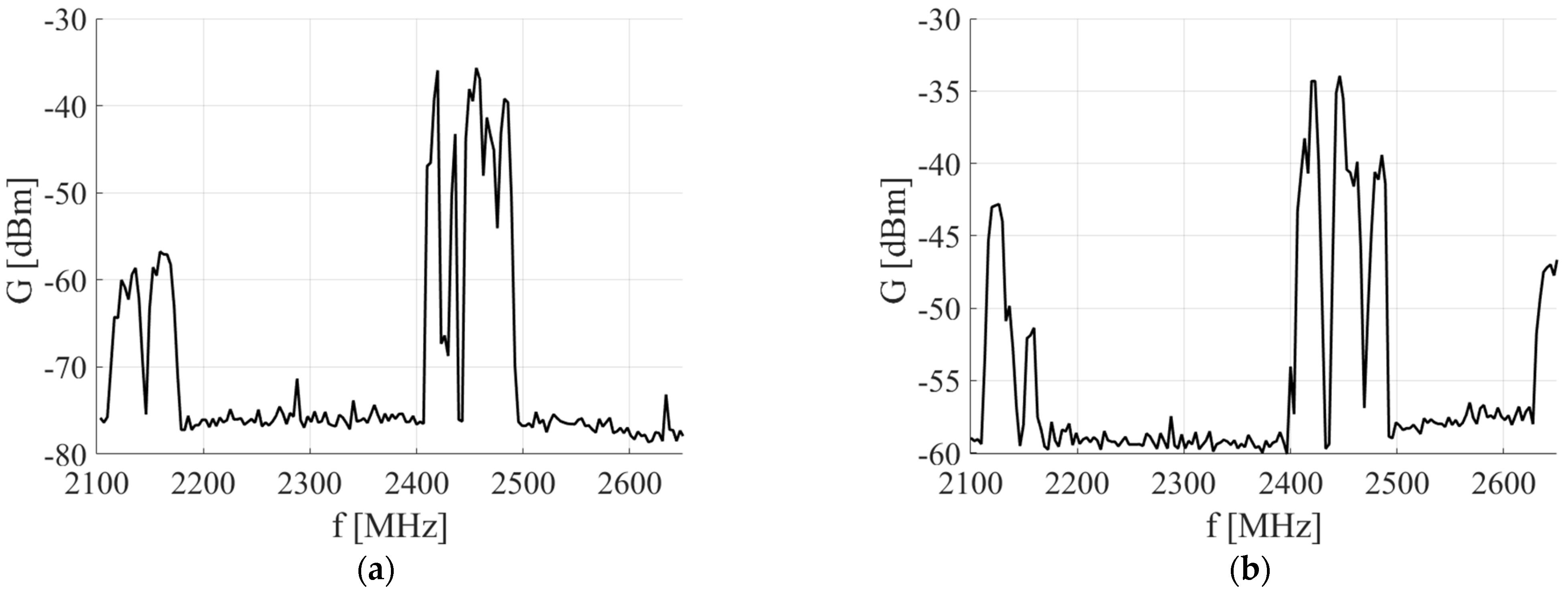
| Core Body Temperature | Local Temperature (Head, Torso) | Local Temperature (Limbs) | Local Temperature (Head, Torso, Limbs) | ||
|---|---|---|---|---|---|
| Frequency range | 100 kHz–300 GHz | 100 kHz–6 GHz | 100 kHz–6 GHz | >6–300 GHz | 30–300 GHz |
| Operational threshold | +1° | +2° | +5° | +5° | +5° |
| Spatial averaging | WBA | 10 g | 10 g | 4 cm2 | 1 cm2 |
| Temporal averaging | 30 min | 6 min | 6 min | 6 min | 6 min |
| EMF threshold | 4 W/kg | 20 W/kg | 40 W/kg | 200 W/m2 | 400 W/m2 |
| Reduction factor | 10 | 2 | 2 | 2 | 2 |
| Occupational | 0.4 W/kg | 10 W/kg | 20 W/kg | 100 W/m2 | 200 W/m2 |
| Reduction factor | 50 | 10 | 10 | 10 | 10 |
| Public | 0.08 W/kg | 2 W/kg | 4 W/kg | 20 W/m2 | 40 W/m2 |
| Position | Without Call E [mV/m] | Ongoing Call E [mV/m] |
|---|---|---|
| Open space | 1.0 | 6.8 |
| Elevator cabin | 0.89 | 12.2 |
| Frequency Band [MHz] | CAR | Without Call E [mV/m] | Ongoing Call E [mV/m] |
|---|---|---|---|
| 2100–2150 | A | 236.85 | 254.96 |
| 2400–2500 | A | 117.00 | 199.38 |
| 2100–2150 | B | 41.83 | 55.26 |
| 2400–2500 | B | 8.2 | 218.10 |
Disclaimer/Publisher’s Note: The statements, opinions and data contained in all publications are solely those of the individual author(s) and contributor(s) and not of MDPI and/or the editor(s). MDPI and/or the editor(s) disclaim responsibility for any injury to people or property resulting from any ideas, methods, instructions or products referred to in the content. |
© 2023 by the authors. Licensee MDPI, Basel, Switzerland. This article is an open access article distributed under the terms and conditions of the Creative Commons Attribution (CC BY) license (https://creativecommons.org/licenses/by/4.0/).
Share and Cite
Vaverka, F.; Smetana, M.; Gombarska, D.; Psenakova, Z. Investigation of Microwave Electromagnetic Fields in Open and Shielded Areas and Their Possible Effects on Biological Structure. Sensors 2023, 23, 2351. https://doi.org/10.3390/s23042351
Vaverka F, Smetana M, Gombarska D, Psenakova Z. Investigation of Microwave Electromagnetic Fields in Open and Shielded Areas and Their Possible Effects on Biological Structure. Sensors. 2023; 23(4):2351. https://doi.org/10.3390/s23042351
Chicago/Turabian StyleVaverka, Filip, Milan Smetana, Daniela Gombarska, and Zuzana Psenakova. 2023. "Investigation of Microwave Electromagnetic Fields in Open and Shielded Areas and Their Possible Effects on Biological Structure" Sensors 23, no. 4: 2351. https://doi.org/10.3390/s23042351
APA StyleVaverka, F., Smetana, M., Gombarska, D., & Psenakova, Z. (2023). Investigation of Microwave Electromagnetic Fields in Open and Shielded Areas and Their Possible Effects on Biological Structure. Sensors, 23(4), 2351. https://doi.org/10.3390/s23042351






